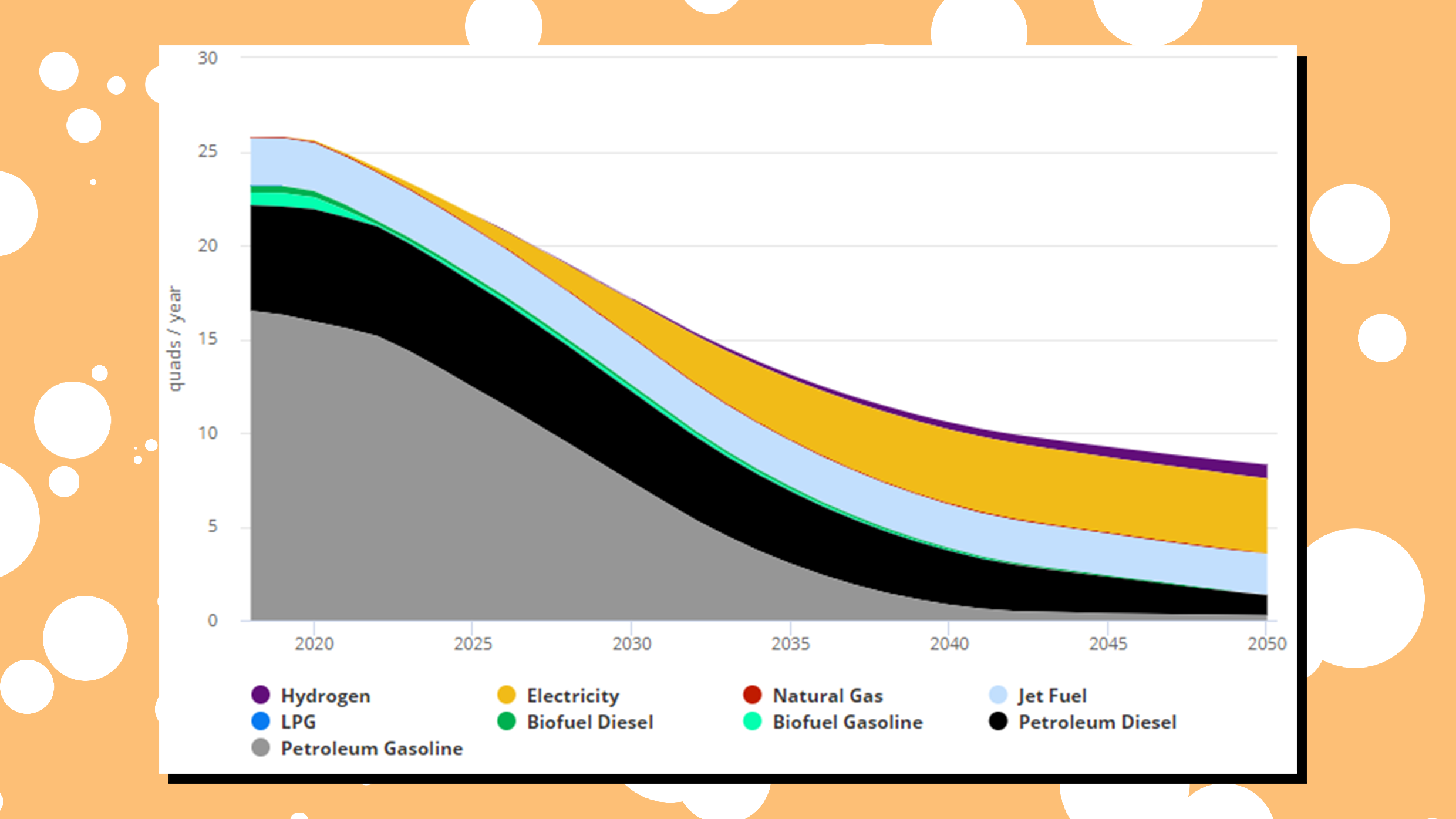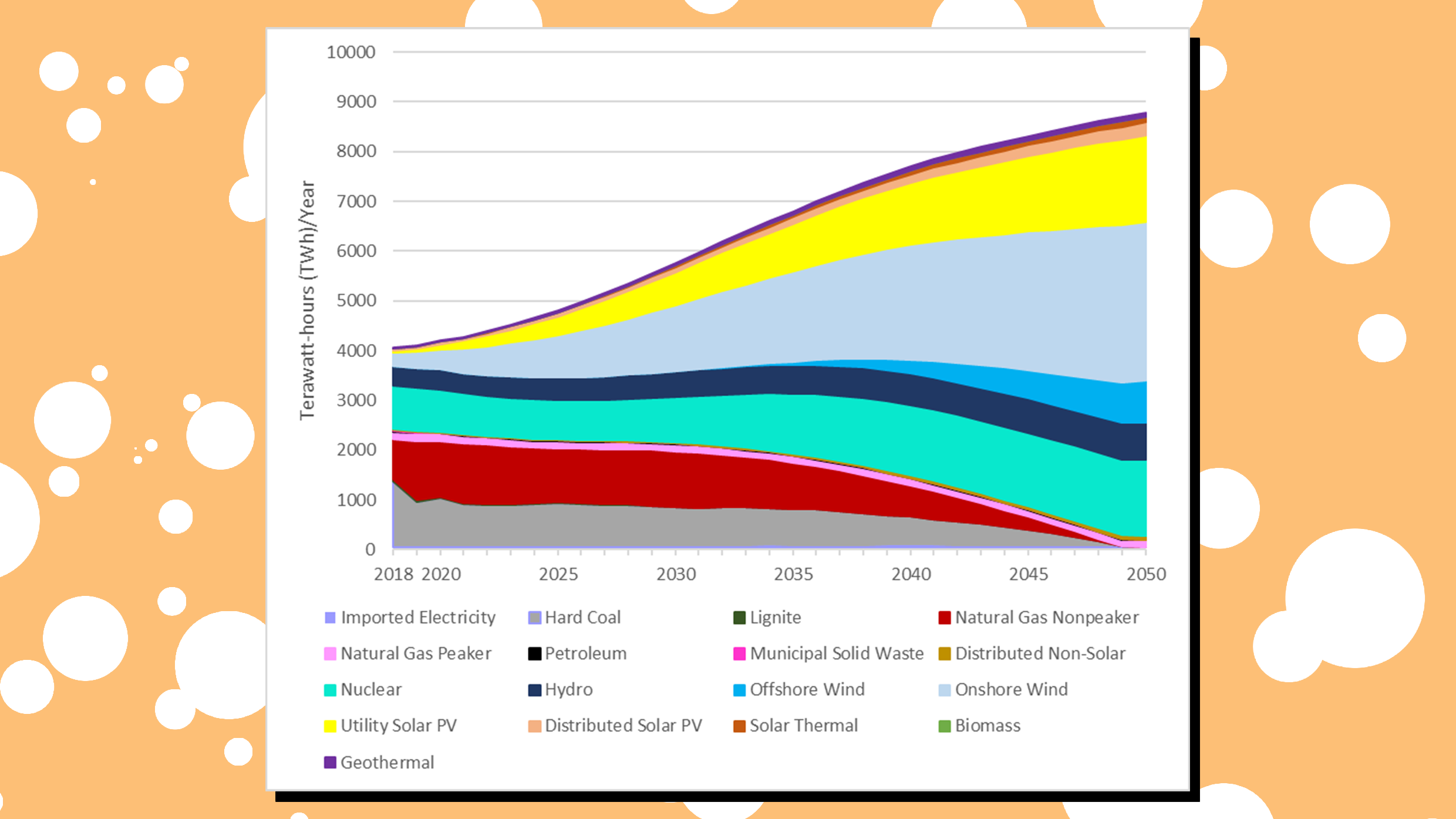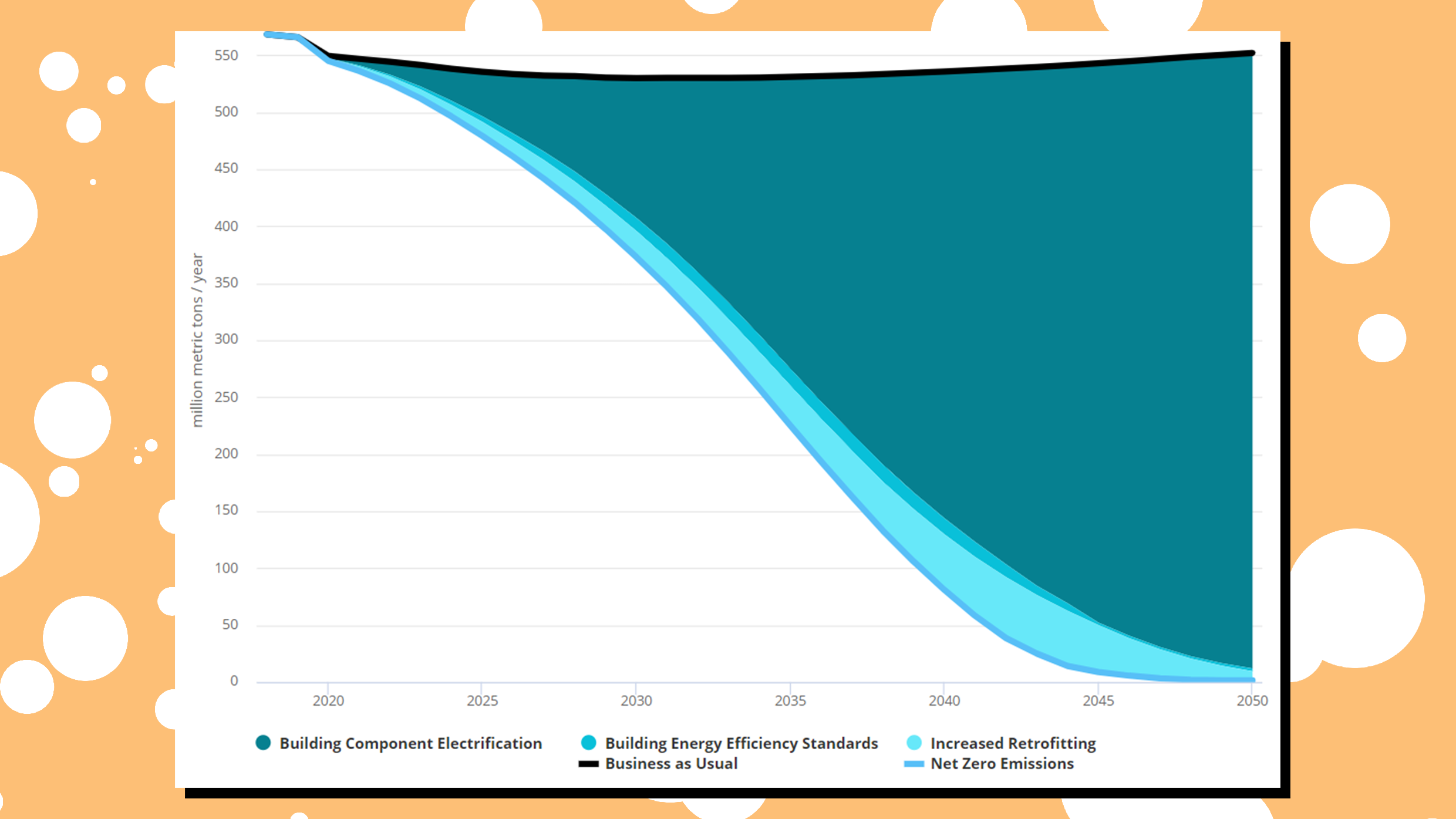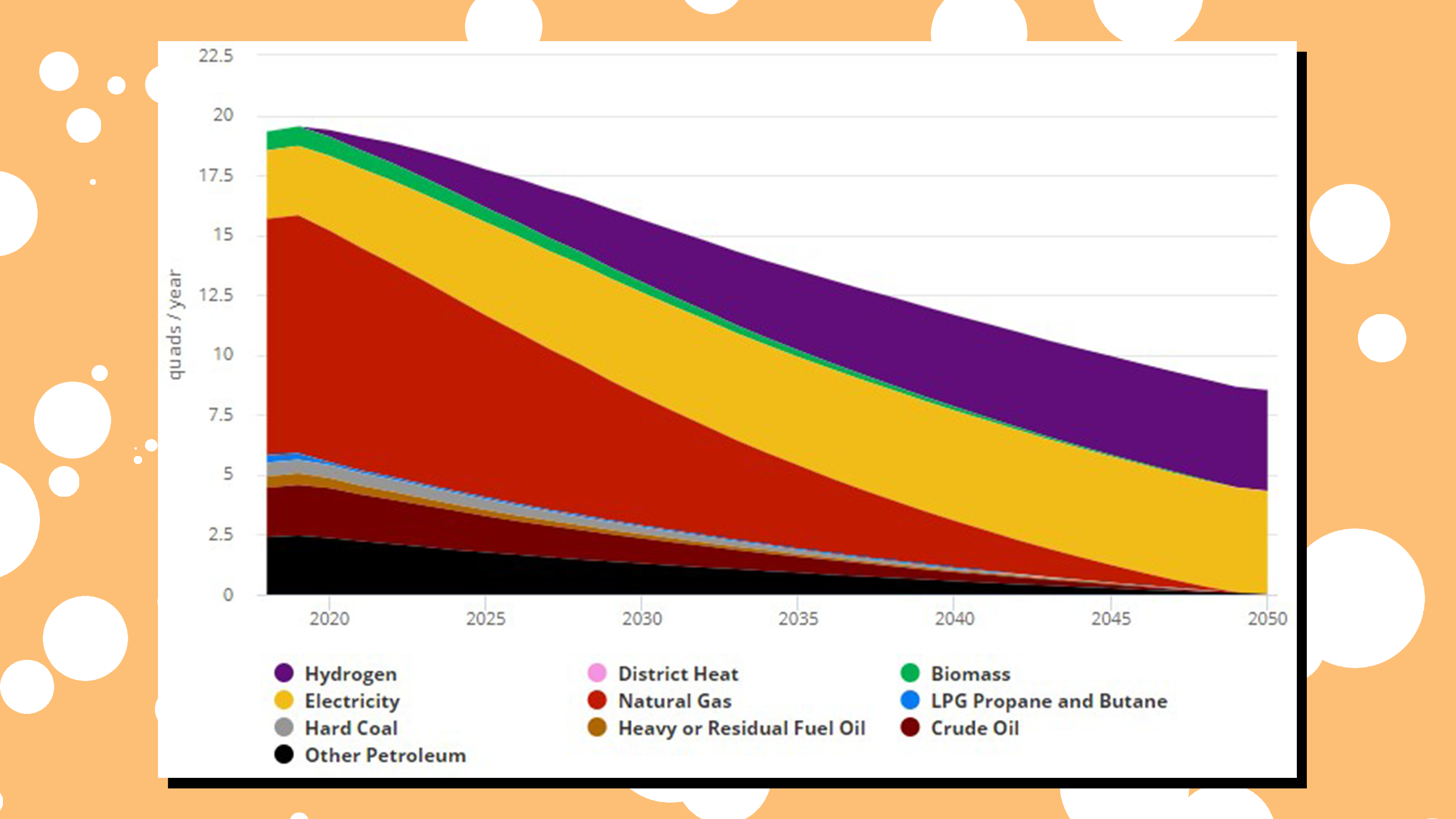To tackle climate change, scientists say that we need to hit net zero emissions by 2050. “We really need policy to be able to enact the large-scale system change that we need to reach the kind of climate goals that our leaders are now talking about,” says Sonia Aggarwal, vice president of the nonprofit Energy Innovation. “In order to reach net zero, it can’t be one technology on its own. It has to be a system-level way of thinking. And policy is really a key to that.”
To make those policies more clear, Energy Innovation has debuted a new analysis that calculates exactly which policy changes are needed in the U.S. to reach that goal, using a tool the group developed called the Energy Policy Simulator. Using public data, the tool simulates the future of major sectors and how price and demand will change over time, and then the researchers plug in various climate policies to see how they interact with each other as a system.
The analysis looked at what needs to happen in four areas: transportation, electricity, buildings, and industry. In each case, the country won’t completely decarbonize by 2050 but will get so close to that goal that it’s possible for forests and other land-use changes to sequester the emissions that remain. All of these changes are major but not unprecedented. The nonprofit notes, for example, that 250,000 miles of power lines were built in the U.S. between 1935 and 1940.

Transportation
As electric cars continue to get cheaper, they’ll naturally replace more and more fossil-powered cars—but not quickly enough to get to net zero emissions by midcentury without more aggressive policy shifts. Other parts of the transportation industry, including ships and aviation, will be harder to transform. These are the key policies that will need to be implemented:
- Electric vehicle sales requirement: Since vehicles can last for decades, getting to net zero by 2050 means ending sales of new fossil-powered cars very quickly. By 2030, 100% of new cars, motorcycles, buses, and trains will need to be all-electric. Half of new medium- and heavy-duty trucks will have to be all-electric. Seven other countries also have bans on new fossil vehicles sales set to take effect in 2030. This policy will cover 73% of the needed emissions reductions.
- Transportation demand management: Changes in policy can help encourage people in cities to drive less, including encouraging new building near transit hubs and improving public transportation. Because vehicles are shifting to clean energy, though, these policies are only responsible for 13% of emissions cuts in the sector.
- Hydrogen vehicle sales requirement for trucks: Trucks that travel long distances are more challenging to run on electric power, so this policy says that 50% will have to run on hydrogen by 2040 instead.
- New efficiency standards for airplanes (a 25% improvement by 2040), ships (a 20% improvement by 2040), and to a lesser extent, other vehicles, which will already be transitioning to clean energy.

Electricity
The electricity sector is already transforming rapidly: hundreds of coal-fired power units have shut down in the U.S. since 2010. Two of the largest coal plants in the country closed this month. Still, more than half of American power still comes from fossil fuels. These are the key policies needed to decarbonize the sector:
- A carbon-free electricity standard: Copying policy that already exists in many states, the federal government can set targets for moving to clean power, with larger and larger percentages that utilities have to meet over time. Nine states, in addition to Washington, D.C. and Puerto Rico, have goals to reach 100% clean energy by 2050 or earlier. The transition can be eased with complementary policies, such as policies that make it easier to build new transmission lines.
- Reducing electricity use: Policies like efficiency standards for buildings can help reduce demand for electricity, making it easier to meet the goal for clean power. Encouraging manufacturers to reuse materials and design products to last longer (so fewer new products have to be made) will also help.

Buildings
Buildings are responsible for more than a quarter of all of the emissions in the U.S., if you include their electricity use. But even once the electricity sector transforms, heating will still be a major source of emissions in buildings. Without new policies, those emissions won’t fall by midcentury. Here’s what needs to happen:
- Shifting to electricity: Policies that encourage building components like heaters and stoves to move to electricity need to happen quickly, since those components typically last a long time. Berkeley, California, which recently enacted a ban on gas equipment in new homes starting next year, is one model for what could happen. By 2035, all new equipment and appliances nationally should be electric. This change is responsible for 87% of the emissions cuts in the nonprofit’s model.
- Incentives for retrofits: Since most buildings are older, incentives that help owners shift away from natural gas equipment can help. Rebates for installing new equipment such as geothermal heat pumps can also help.

Industry
Heavy industry—from making plastic and cement to refining natural gas and petroleum—is responsible for 29% of the country’s emissions (and 35% if electricity use is included). Here are some of the key changes needed to lower that number:
- Changing power sources: Shifting to electricity and hydrogen power can provide 38% of the emissions reductions.
- Smarter design: Designing products to save material, reusing old materials, and designing products to last longer reduces emissions by another 21%.
- Other policies: Several other policies make up the rest of the cuts, including capturing methane emissions, replacing polluting refrigerants, implementing a carbon tax that incentivizes factories to cut emissions, and increasing energy efficiency standards.
Understanding the details can help policymakers—and presidential candidates who are planning climate policy—set the right goals. “I think right now the policy conversation is very focused on aspirational targets,” says Aggarwal. Without a detailed plan, there’s a risk that those targets won’t be ambitious enough, or that policymakers don’t understand broader implications for infrastructure or the speed that solutions need to be deployed. “Looking at the pathways really helps us understand the kinds of near-term actions that are required to put us on the right path,” she says.
Recognize your brand’s excellence by applying to this year’s Brands That Matter Awards before the early-rate deadline, May 3.